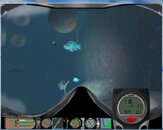I believe only one certain Aladin model suffered this problem otherwise the subsequent law suit would be huge!There have been problems in the past related to computers (eg, uwatec aladin X circa 1995) that "held" their nitrox settings beyond some reasonable time-frame following a dive and causing users to have DCS related accidents as a result of failing to notice that fact. IIRC in the case the Uwatec recall it had to do with the computer assuming that the diver was still breathing nitrox during the surface interval.
As a result, manufactures did a "re-think" and all computers now "default" to air at some reasonable point in time after the dive. This is normal and considered to be a safety feature. R..
Aladin Pro Nitrox is one of the exception as I am still using it since 1996/7 without suffering any mishap. The set Nitrox value never default back to 21%. Which is bad/good if you are do not check the setting first!!




